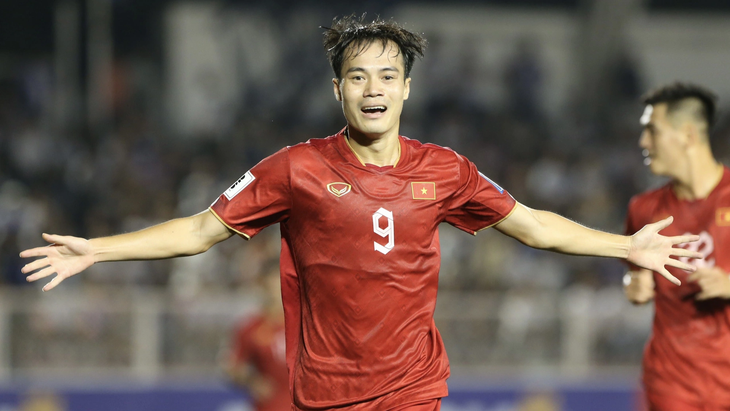The Vietnamese team showed several positive signs against familiar opponents, which was a refreshing change from their recent friendly matches.
One possible explanation for this improvement, aside from the Philippine team’s lackluster performance, is the noticeable changes in Vietnam’s playing style.
Surprise factor
Overall, manager Philippe Troussier had his team stick to their ball control philosophy, a principle he has been diligently instilling in them. This was evident throughout the away game on Thursday.
As a surprise element, the French coach deviated from the play style that didn’t involve a target striker and instead chose to start striker Nguyen Tien Linh.
While Linh didn’t particularly outshine his teammates Nguyen Van Toan and Pham Tuan Hai, his skillful positioning and movement as a genuine striker created valuable space for them. This enabled them to launch dangerous attacks in the opponents’ penalty area.
Notably, Toan’s opening goal in the 16th minute came from a well-orchestrated situation like this.
In contrast to previous matches, the Vietnamese team demonstrated improved cohesion and fluidity in coordinating their attacks.
Regrettably, Troussier’s squad struggled with their finishing ability, letting several scoring opportunities slip away.
A young line-up
Troussier appeared to strategically test several young players in the line-up.
In midfield, he experimented with the duo of Nguyen Tuan Anh and Nguyen Thai Son, deviating from the usual choices of Do Hung Dung and Nguyen Hoang Duc.
Although this midfield pairing proved strong enough to overpower the Philippines, it raises uncertainties about their performance against more formidable opponents like Iraq, whom they will host at My Dinh Stadium in Hanoi on November 21.
In defense, Troussier preferred Phan Tuan Tai, Bui Hoang Viet Anh, and Nguyen Thanh Binh over more experienced players.
However, this defensive trio didn’t perform well and lacked necessary solidity.
The subdued performance of the Philippines’ strikers helped secure Dang Van Lam’s goal.
No doubt, Troussier has additional tasks at hand to reinforce the defense wall in preparation for the upcoming great challenge against Iraq.
In summary, the Frenchman’s success in the match against the Philippines went beyond the 2-0 victory, with particular emphasis on the impressive performance of the young players.
Phan Tuan Tai, Vo Minh Trong, and Nguyen Thai Son showcased excellent flair, with Tai and Trong’s striking shots leaving a lasting impact on fans.
Even the substitutes, including Ho Van Cuong, Nguyen Van Tung, and Nguyen Dinh Bac, surpassed expectations.
Notably, Bac sealed Vietnam’s 2-0 triumph with a confident long-range shot in the fourth injury minute.
While the score may be seen as less than fully satisfying by some, Troussier achieved multiple objectives in Thursday’s game — securing maximum points, preserving the team’s personnel, concealing his strategy, and providing young players with valuable opportunities to showcase their talent.
In his post-match comment, Troussier expressed his satisfaction with the team’s determination and improved tactical discipline.
The manager was confident that if his team had capitalized on the numerous opportunities created during the game, they could have secured an earlier second goal.
The second round of the 2026 World Cup qualification in Asia consists of 36 teams divided into nine groups, each with four teams. These teams will compete in home-and-away matches from November 2023 to June 2024.
The winners and runners-up in each group will advance to the third round and secure automatic qualification for the 2027 Asian Cup finals.
In the third round, the 18 qualifying teams will be divided into three groups of six teams each.
The winners and runners-up from each group will directly qualify for the 2026 FIFA World Cup finals in Canada, Mexico, and the United States.









